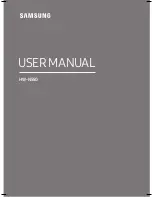
13
Mi2526
Nome
: inserire in questo campo un nome alfanumerico che consenta
di identificare più facilmente la pulsantiera all’interno della propria rete,
soprattutto nel caso in cui siano presenti più pulsantiere in
corrispondenza degli ingressi (es. Principale, Garage, Cancello...).
SIP user agent
: campo contiene un nome che consente di identificare
il dispositivo nelle chiamate SIP.
Account
:
affinché la pulsantiera possa autenticarsi è necessario
creare precedentemente un interno (account) nel proprio centralino da
assegnare alla pulsantiera. Utilizzare questo campo per inserire i valori
di autenticazione per la pulsantiera sul server SIP.
ID autenticazione
:
nome utente, solitamente coincide con il numero di
interno assegnato alla pulsantiera sul centralino.
Password
:
password per la registrazione sul server SIP.
Invia registro
:
quando il server richiede la registrazione (come nella
maggior parte dei casi) spuntare questa opzione.
Server registrazione
: indirizzo IP o nome del server attraverso il
quale saranno instradate le chiamate.
Porta
:
porta (usualmente 5060/5061) del server SIP per la
registrazione.
Scadenza registrazione [sec]:
tempo di validità della registrazione
sul server SIP (intervallo di invio di richieste di registrazione).
Registra dopo il riavvio
: abilitare questa opzione per effettuare la
registrazione SIP all'avvio della pulsantiera.
Server SIP
: indirizzo IP o nome del server SIP dove viene effettuata la
registrazione. Se questo campo non è compilato, la registrazione verrà
effettuata nello stesso server specificato in “
Registration server
” (in
questo caso si raccomanda di selezionare l'opzione “
Send register
”).
Porta
:
porta (usualmente 5060/5061) del server SIP per la
registrazione.
Outbound proxy
:
indirizzo IP o nome del server proxy a cui la
pulsantiera invierà le richieste. Il server proxy viene utilizzato nel caso
in cui la rete utilizzi il NAT, altrimenti non è richiesta la compilazione di
questo campo.
Porta
:
porta (usualmente 5060/5061) del server.
Trasporto SIP
: selezione del protocollo di trasmissione TCP o UDP o
automatico in funzione del server SIP utilizzato.
Provisional code
: consente di determinare se durante la chiamata
vengano inviati i codici SIP “180 Ringing” o “183 session progress”.
Abilita RTP simmetrico
: abilita la funzione RTP simmetrico (default
ON) affinché la pulsantiera non invii da sola audio ma solo quando
richiesto dalla contro parte RTP. Dopo aver ricevuto la richiesta i dati
verranno inviati allo stesso indirizzo:porta da cui il messaggio è stato
ricevuto. Questa opzione viene utilizzata per aggirare il NAT.
Per salvare le modifiche effettuate fare click sul pulsante “
Salva
”. Per
ripristinare i parametri originali fare click su “
Valori default
”.
Display name
: input on this field an alphanumeric name which
allow to easily identify the door station within the network. This
feature is mostly useful in the case of more than just one door
station are connected on the same LAN network (i.e. Main,
Garage, Gate...).
SIP user agent
: this field contains a name which allows to
identify the device within the SIP calls.
Account
: to allow the door station’s authentication, it is
required to create an extension (account) on the PBX
previously. Use this field to input the door station's
authentication values on the SIP server.
Auth
.
ID
: user name, usually it is the same of the SIP internal
number assigned to the door station.
Password
: password required for SIP registration.
Send registration
: if the server required the registration (as in
most of the cases) check this box.
Registration server
:
IP address or domain name of the server
used for handling the SIP calls.
Port
: SIP server port (usually 5060 or 5061) for registration.
Expiration [sec]:
time validity of the registration on the SIP
server (registration requests interval).
Registrate after restart:
enable this option to allow the door
station to register on the SIP server during the boot sequence.
SIP server:
IP address or domain name of the SIP server
where the SIP registration will be done. If this field is not filled,
the registration will be made on the same SIP server of the
previous “
Registration server
” field (in this case it is
recommended
to check the option “
Send
register
”).
Port
: SIP server port (usually 5060 or 5061) for registration.
Outbound proxy
:
IP address or name of the proxy server to
which the door station will send requests. The proxy server is
used mainly where the network uses NAT. Otherwise it is not
required to fill.
Port
: SIP server port (usually 5060 or 5061) for registration.
SIP transport
: transmission protocol (TCP, UDP or automatic)
selection according to what require4d by the SIP server used.
Provisional code
: it determines if during call the SIP codes
“180 ringing” or “183 session progress” will be sent.
Enable simmetric RTP
: enable the symmetric RTP (default
ON) to allow the door station to do not send audio by itself but
only when it will be required by the other RTP party. After
receiving the request the data will be sent to the same
address:port from where the message is received. This option
is used mainly for NAT bridging.
Please remind to click on “
Save
” button to store the
parameters changed in this window. To restore factory default
values, click on “
Default
values
” button.














































